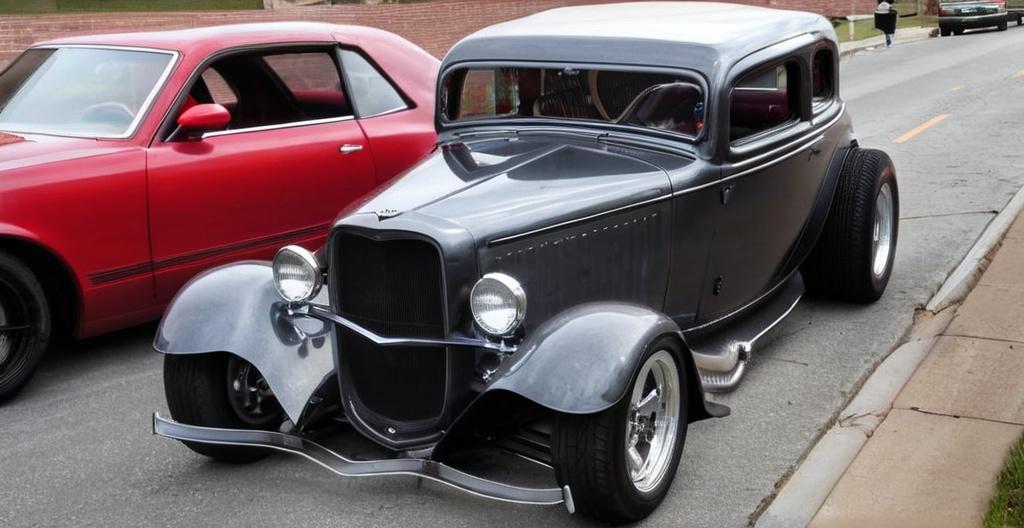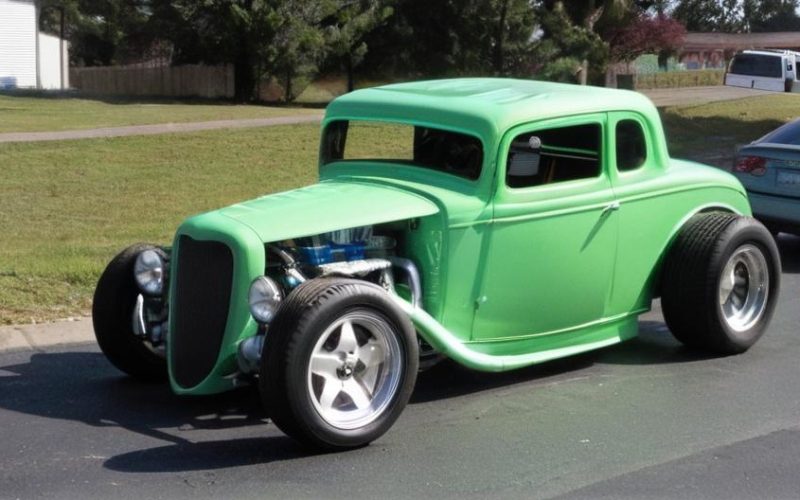Key Take Aways About How Street Rodding Has Influenced Music and Fashion
- Street rodding influences music, with bands like The Beach Boys celebrating car culture in their songs.
- Car culture represents freedom and rebellion, inspiring both past and modern music genres.
- Fashion derives rugged aesthetics from street rodding, blending denim, leather, and practicality.
- Street rodding is a community-focused lifestyle, influencing personal stories and social gatherings.
- The commercial impact is significant, encompassing custom parts, events, and merchandise, showing economic strength.
- Overall, street rodding reshapes music, fashion, and business, symbolizing freedom and creativity.

Street Rodding and Its Impact on Music
Street rodding has rolled its way not only into garages but into the music scene too, changing how artists sing about the road and the machines they adore. Think about rock ‘n’ roll, especially in the ’50s and ’60s. Musicians didn’t just play tunes—they played cars like instruments. Take bands like The Beach Boys or Jan and Dean; they spun tracks that revved up people’s love for souped-up cars and high speed.
Why did cars find a place in music? It goes back to that energy and freedom a street rod represented—it’s the open road, rebellion, and a sprinkle of grease under the nails. Musicians felt that, and they wanted to share it with others. Songs like “Little Deuce Coupe” or “409” didn’t just talk about cars—they painted pictures of fast rides and slick machines, making car culture rock the music charts.
Yet, this isn’t yesterday’s news. Modern artists still get caught up in car culture, weaving it through hip hop and pop songs today. You hear about the supercars and modded rides in tracks that dominate the charts, and it’s clear as day how street rodding keeps its grip on music.
The Fashion Groove of Street Rodding
Now, let’s shift gears and look at another lane—fashion. Street rodding added its flair to what folks decide to wear, making gearheads not just look like they know cars but look like they live ’em. It’s all about that casual, rugged aesthetic, where practicality meets style. Denim, leather jackets, bandanas—these moved from the garage to the fashion runway.
Why have these styles clicked? Because they echo authenticity. If you’ve tinkered under a hood, you know thick denim isn’t just durable—it’s a badge of honor that lets folks know you’re the real deal. And leather jackets? They scream rebellion, like you’re always a wrench turn away from hitting the open road.
Street rodding fashion isn’t afraid of taking risks, mixing and matching vintage with modern. Even high-end fashion labels borrow from this aesthetic, proving you can’t really peg street rodding into a style box. It’s that blend of utility and boldness that keeps it revving on the fashion scene.
Personal Stories – Street Rodding’s Lifestyle Impact
Alright, let’s pull from some personal tales. Picture a bunch of teenagers in the ’70s, spending their Saturdays tuning up a 1932 Ford. That was my uncle and his crew, elbow-deep in grease, learning as they went. For them, street rodding wasn’t a hobby; it was a lifestyle. They’d drive around, showing off their latest mods, meeting up with others who shared their passion for roaring engines and chrome finishes.
These gatherings weren’t just about cars; they were about community—a common tune in street rodding circles. It’s a culture that binds folks together, from car meets to music gigs, and yes, even through shared fashion tastes. The stories shared over an open hood carry as much weight as the cars themselves.
The Commercial Side of Street Rodding
Where there’s culture, there’s business. Street rodding didn’t just inspire music and fashion; it opened avenues for commerce, from selling custom parts to creating themed events that draw enthusiasts worldwide. Car shows, swap meets, and merchandise—street rodding spins a commercial world all on its own.
This market keeps expanding as it taps into the nostalgia and lifestyle of car enthusiasts who hang onto every gear shift and engine rev. Businesses have learned to cater to an audience that breathes cars, providing everything from attire to car-care products. The economic ripple effect of street rodding shows how a hobby can steer its way into serious dollars.
Conclusion
Street rodding isn’t just about modifying cars—it’s a cultural movement that reshaped music, fashion, and even economics. It speaks of freedom, creativity, and community, throttling its influence into various spheres of life. Tuning into a street rod’s roar is more than just a mechanical symphony; it’s a heartfelt ode to the car culture that continues to drive forward.
